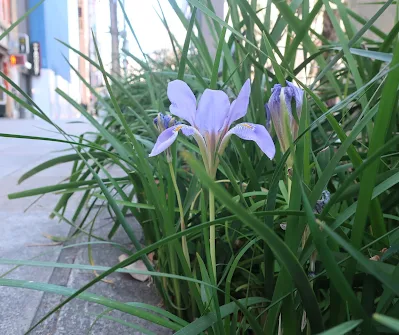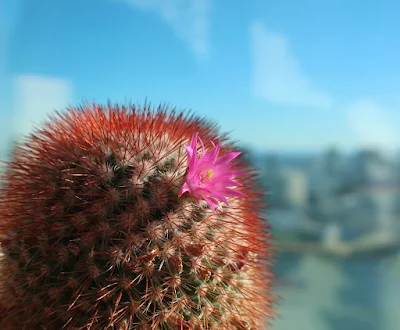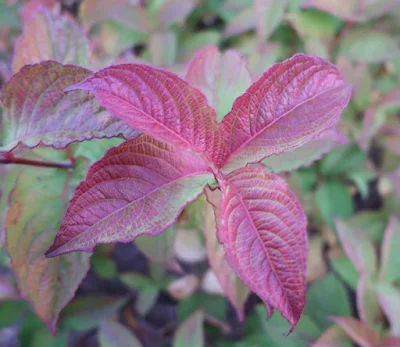Japanese follows English. 英語の後に日本語が続きます。
It was around 7 a.m. I looked up in the sky and saw the Moon. The air is cold and dry. It's a typical Japanese winter day.
Hi! I'm Kei Narujima. This is a blog about flowers/plants🌼and bugs🐛, and sometimes art and unique Japanese culture that make you smile or think (or so I hope)!! こんにちは。花や虫、そして時々日本の文化などについて書いてます😊。税務英語については https://zeimueigo.blogspot.com/ をご覧ください。
Algerian Iris (Iris Unguicularis) カンザキアヤメ(寒咲菖蒲)
英語の後に日本語が続きます。
I saw this Algerian iris (Iris unguicularis) in Central Tokyo. The contrast between pale purple and yellow is so beautiful. I thought it strange for an iris to flower in winter, but it's understandable. Algerian irises produce flowers in winter and that's why they're called "iris flowering in winter" in Japanese.
I saw this Algerian iris (Iris unguicularis) in Central Tokyo. The contrast between pale purple and yellow is so beautiful. I thought it strange for an iris to flower in winter, but it's understandable. Algerian irises produce flowers in winter and that's why they're called "iris flowering in winter" in Japanese.
Cranberry (Vaccinium Oxycoccos) ツルコケモモ(蔓苔桃)
Japanese follows English. 英語の後に日本語が続きます。
These are cranberries (Vaccinium oxycoccos). I've heard of the berries and must have eaten them but haven't seen them raw. The cranberry produces fruits from September to October in Japan. These cranberries (which look like small apples, don't they?) have survived the winter.
Thalictrum Aquilegifolium var. Intermedium カラマツソウ(落葉松草、唐松草)
Japanese follows English. 英語の後に日本語が続きます。
Grevillea Elegance グレヴィレアエレガンス
Japanese follows English. 英語の後に日本語が続きます。
I was walking in central Tokyo. It was raining and I was feeling sad and lonely and then I found these Grevillea 'Elegance' flowers. At first the bright pink caught my eye and then flowers, which look like spider lilies. I took out my camera from my backpack and started photographing them.
 |
| Grevillea elegance グレヴィレアエレガンス |
Pink Knotweed (Persicaria Capitata) ヒメツルソバ(姫蔓蕎麦)
Japanese follows English. 英語の後に日本語が続きます。
I wrote about Chinese knotweed (Persicaria chinensis) yesterday and today's post is about pink knotweed (Persicaria capitata). Pink knotweed is called "princess Chinese knotweed" in Japanese because its flower and leaf shapes are similar to, but smaller than, those of Chinese knotweed. And pink knotweed flowers look like really princesses to me.
Chinese Knotweed (Persicaria Chinensis) ツルソバ(蔓蕎麦)
Japanese follows English. 英語の後に日本語が続きます。
I've been googling the name of the plant for a week and finally found it. This is Chinese knotweed (Persicaria chinensis). The tiny flowers are so cute! Chinese knotweed is supposed to flower from May to November in Japan, which is why it took so long to find out its name. I see Chinese knotweed only there and have no idea where it came from.
I've been googling the name of the plant for a week and finally found it. This is Chinese knotweed (Persicaria chinensis). The tiny flowers are so cute! Chinese knotweed is supposed to flower from May to November in Japan, which is why it took so long to find out its name. I see Chinese knotweed only there and have no idea where it came from.
 |
| Chinese knotweed (Persicaria chinensis) ツルソバ(蔓蕎麦) |
Wintersweet (Chimonanthus Praecox) ロウバイ(蝋梅)
Sunset 夕焼け
Japanese follows English. 英語の後に日本語が続きます。
I'm an early bird, so I see the sunrise almost everyday but rarely see such a beautiful sunset. I was just standing there smiling.
I'm an early bird, so I see the sunrise almost everyday but rarely see such a beautiful sunset. I was just standing there smiling.
2024 is the Year of the Dragon! 今年は辰年だ!
Japanese follows English. 英語の後に日本語が続きます。
The Japanese zodiac signs are the following 12 in this order and people born in the year of each sign are said to have the following personalities. (So, for example, if you were born in 2000, your zodiac sign is Dragon, so see 5 below!)
These are stuffed dragons on zodiac trees at Tokyo International Forum. Every December and January, the facility displays trees of stuffed animals of the zodiac sign of the coming year. The trees this year have stuffed dragons because 2024 is the Year of the Dragon🐉.
The Japanese zodiac signs are the following 12 in this order and people born in the year of each sign are said to have the following personalities. (So, for example, if you were born in 2000, your zodiac sign is Dragon, so see 5 below!)
- 🐭 Rat - Be adaptable, resourceful, sociable, honest, calm, but nosy
- 🐂 Ox - Be quiet, patient, at their own pace, but when angry, out of control
- 🐯 Tiger - Be romantic, brave, enjoy challenges, but stubborn and restless
- 🐇 Rabbit - Be graceful, quiet, sensitive, but moody and easily hurt
- 🐉 Dragon - Be energetic and competitive, but short-tempered having high pride
- 🐍 Snake - Be considerate, funny, caring, but vindictive having high pride
- 🐴 Horse - Be quick-witted, clever, speedy, clown-like, but self-centered
- 🐏 Sheep - Be thoughtful, compassionate, chic, but can't handle pressure well
- 🐵 Monkey - Be street smart, popular, sensitive, likable, but restless and impatient
- 🐔 Rooster - Be intuitive, smart, methodical, but not tenacious and a quitter
- 🐶 Dog - Be honest, clearheaded, have a strong sense of justice, but negative
- 🐗 Boar - Be conscientious, honest, caring, but short-tempered and rush recklessly
 |
| Dragon tree for 2024 辰ツリー |
Venus and Crescent Moon 月と金星
Japanese follows English. 英語の後に日本語が続きます。
Can you see them? If not, look at the second photo. They are the crescent moon and bright Venus.
Can you see them? If not, look at the second photo. They are the crescent moon and bright Venus.
Bermuda Buttercup (Oxalis Pes-Caprae) オオキバナカタバミ(大黄花酢漿草)
Japanese follows English. 英語の後に日本語が続きます。
The bright yellow caught my eye. These are Bermuda buttercups (Oxalis pes-caprae). The buttercup oxalis usually blooms from March to May, but as it was warm yesterday in Tokyo, I can't blame them for thinking spring has arrived.
The bright yellow caught my eye. These are Bermuda buttercups (Oxalis pes-caprae). The buttercup oxalis usually blooms from March to May, but as it was warm yesterday in Tokyo, I can't blame them for thinking spring has arrived.
Euonymus Japonicus (Japanese Spindle) 柾(マサキ)
Japanese follows English. 英語の後に日本語が続きます。
These are fruits of evergreen spindle or Japanese spindle (Euonymus japonicus). The split pale red fruits showing uniquely shaped bright orange seeds are so pretty. The fruit in the center of the first photo looks like a face with a big nose to me. What do you think?
These are fruits of evergreen spindle or Japanese spindle (Euonymus japonicus). The split pale red fruits showing uniquely shaped bright orange seeds are so pretty. The fruit in the center of the first photo looks like a face with a big nose to me. What do you think?
Cactus Flower サボテンの花
Japanese follows English. 英語の後に日本語が続きます。
I knew cacti produce flowers, but it was my first time to see a cactus flower in person. It's so lovely, isn't it? Something has devastated me, but this tiny flower against the blue sky was so beautiful that I was able to stop crying and smile just a little.
I knew cacti produce flowers, but it was my first time to see a cactus flower in person. It's so lovely, isn't it? Something has devastated me, but this tiny flower against the blue sky was so beautiful that I was able to stop crying and smile just a little.
Weigela 谷空木(タニウツギ)
英語の後に日本語が続きます。
These are leaves of Weigela. Its flowers are pretty, but look at the color gradients! The leaves are also beautiful, aren't they!
These are leaves of Weigela. Its flowers are pretty, but look at the color gradients! The leaves are also beautiful, aren't they!
Buds of Chimonanthus Praecox (Wintersweet) ロウバイ(蝋梅)の蕾
Japanese follows English. 英語の後に日本語が続きます。
I didn't notice, but the wintersweet season has already started. I look forward to seeing its flowers but this has made me realize that the pollen season will also start when it fully blooms.
I didn't notice, but the wintersweet season has already started. I look forward to seeing its flowers but this has made me realize that the pollen season will also start when it fully blooms.
Namiyoke Shrine 波除神社
Japanese follows English. 英語の後に日本語が続きます。
Happy New Year! This morning, I went to Namiyoke Shrine in Tsukiji, Tokyo to make my first visit to a shrine of the year. The name of the shrine literally means "protection from waves" and this is understandable because Tsukiji, where the shrine is located, was once lowland marshes along the Sumida River delta and reclaimed during the Edo period (1603-1867). You may have heard of Tsukiji as a fish market, which was established in 1935 and existed until 2018 when transferred to Toyosu.
The shrine has two wooden sculptures, both of which are taller than 2 meters. One is of the head of a female lion (1st photo). You can say it's female because the teeth are black, which is a Japanese tradition practiced mainly by married women before the mid-19th century. She has Benzaiten or goddess of eloquence enshrined within itself. And the other is of the head of a male lion (2nd photo). Namiyoke shrine is small and not that famous but I love the shrine for its coziness.
Happy New Year! This morning, I went to Namiyoke Shrine in Tsukiji, Tokyo to make my first visit to a shrine of the year. The name of the shrine literally means "protection from waves" and this is understandable because Tsukiji, where the shrine is located, was once lowland marshes along the Sumida River delta and reclaimed during the Edo period (1603-1867). You may have heard of Tsukiji as a fish market, which was established in 1935 and existed until 2018 when transferred to Toyosu.
The shrine has two wooden sculptures, both of which are taller than 2 meters. One is of the head of a female lion (1st photo). You can say it's female because the teeth are black, which is a Japanese tradition practiced mainly by married women before the mid-19th century. She has Benzaiten or goddess of eloquence enshrined within itself. And the other is of the head of a male lion (2nd photo). Namiyoke shrine is small and not that famous but I love the shrine for its coziness.
登録:
コメント (Atom)
Japanese Snowball Bush (Viburnum Plicatum Var. Plicatum F. Plicatum) オオデマリ(大手毬)
英語の後に日本語が続きます。 The Japanese snowball bush (Viburnum plicatum var. plicatum f. plicatum) is native to, and can be found across, Japan. The b...

-
英語の後に日本語が続きます。 I read "A Pale View of Hills" by Kazuo Ishiguro a few years ago. The book was my second Ishiguro's book after...
-
Japanese follows English. 英語の後に日本語が続きます。 Is he being boiled to death? (This is a revised version of the story originally posted on Se...

































